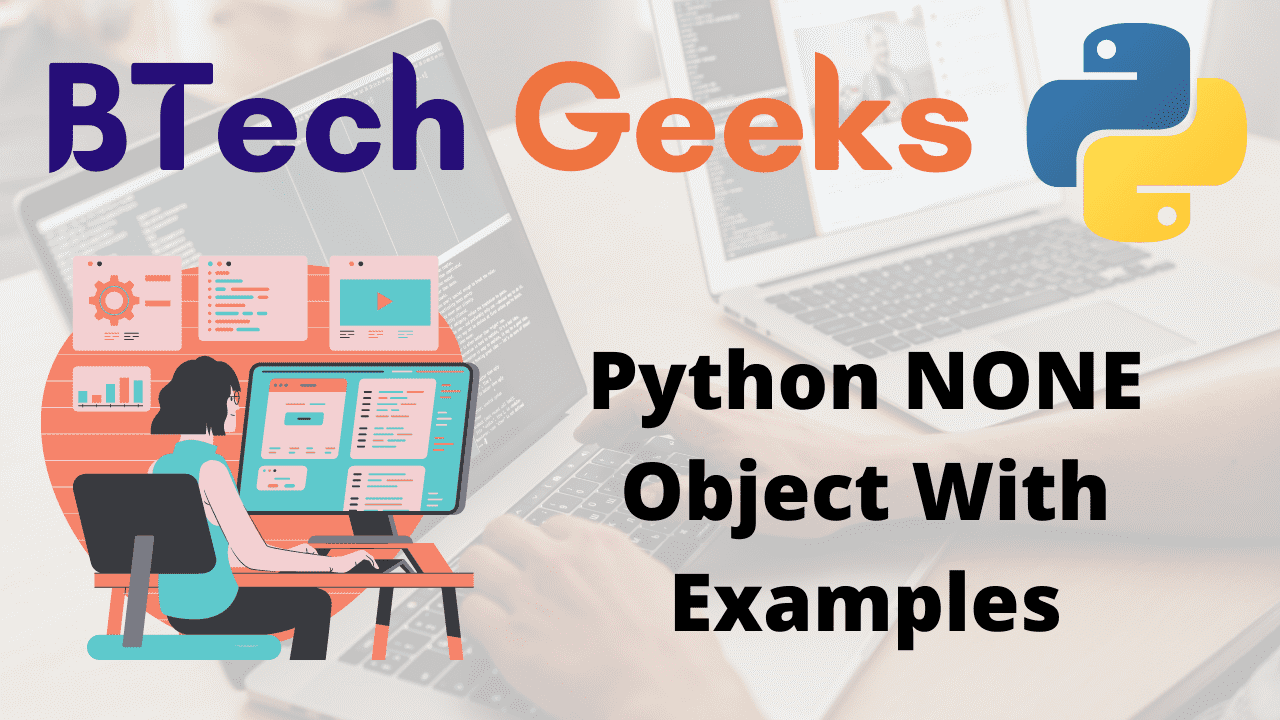NONE Object in Python:
None keyword python: In the realm of Python – Object-Oriented Programming: NONE is an object. In other programming languages, such as PHP, JAVA, and others, it is equivalent to the ‘NULL’ value.
Because the NONE object has the data type ‘NoneType,’ it cannot be used as a value of some primitive data types or boolean values.
As a result, we can assign the value NONE to any variable in use. Let us provide an example to further illustrate the requirement for NONE.
Consider a login form with Python as the backend language to connect to a database. If we want to see if we have a connection to the specified database, we may assign NONE to the database connection object and see if the connection is secure.
- Python Pandas DataFrame itertuples() Function
- Python Pandas Dataframe.eval() Function
- Python NumPy power() Function
Syntax:
variable = NONE
Likewise, assigning a variable to NONE indicates that the variable represents a no-value or a null value.
Implementation of NONE Object
Take a look at the sample below. In this case, we have assigned NONE to the variable x.
Example1: A NONE object is assigned to a Python variable.
# Take a variable and initialize its value with None
x = None
# Print the above variable.
print("Printing the above variable:", x)
Output:
Printing the above variable: None
When we try to print the value saved in the variable, we get the following result. As a result, it is evident that the NONE object represents NONE value, which can be termed a NULL value.
In the following example, we attempted to determine whether the Python NONE object represents an equivalent boolean value.
Example2:
# Take a variable and initialize its value with None
x = None
print("NONE keyword Boolean Test:")
# Check if the variable is true or false using the if conditional statement
if x:
# If it is true, then print "It is True"
print("It is True")
else:
# Else print "It is False"
print("It is False")
The result is FALSE, as seen below. As a result, this example shows that the Python NONE object is not the same as boolean or other primitive type object values.
Output:
NONE keyword Boolean Test: It is False
Combining primitive type and NoneType values with Python data structures such as Sets, Lists, and so on.
Example3: NONE in Python using Set
When we give other primitive type values along with NONE to data structures like sets, lists, and so on, we see that the NONE value returns ‘NONE’ as the value when printed.
# Give the set as static input and store it in a variable.
gvnset = {1, 8, None, 15, 25, 6}
# Iterate in the given set using the for loop.
for itr in gvnset:
# Inside the for loop, print the iterator value.
print(itr)
Output:
1 6 8 15 25 None
Example4: NONE in Python using List
# Give the list as static input and store it in a variable.
gvn_lst = [1, 8, None, 15, 25, 6]
# Iterate in the given list using the for loop.
for itr in gvn_lst:
# Inside the for loop, print the iterator value by converting it into a string
# using the str() function
print(str(itr))
Output:
1 8 None 15 25 6

